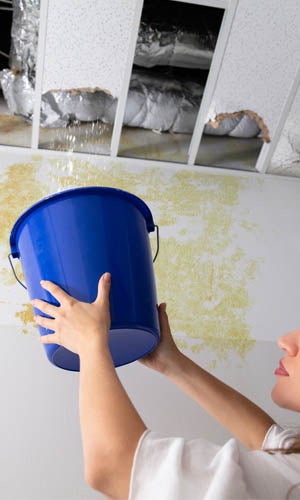We've come across this article about Detecting hidden plumbing leaks below on the internet and reckoned it made good sense to relate it with you on my blog.

Early detection of dripping water lines can reduce a possible disaster. In addition to saving you money, it will certainly reduce the stress and irritation. The minute you discover a leakage, calling your plumber for repairs is the very best solution. Some small water leakages may not be visible. If you can not spot it with your naked eyes, here are some hacks that help.
1. Examine the Water Meter
Every home has a water meter. Checking it is a proven manner in which helps you discover leaks. For beginners, turn off all the water resources. Make sure no one will flush, use the faucet, shower, run the washing device or dishwashing machine. From there, most likely to the meter as well as watch if it will certainly alter. Considering that no one is using it, there should be no movements. If it moves, that indicates a fast-moving leak. Likewise, if you discover no changes, wait an hour or two and also examine back once more. This means you might have a slow-moving leakage that might also be below ground.
2. Examine Water Usage
If you spot abrupt modifications, regardless of your usage being the same, it indicates that you have leaks in your plumbing system. An abrupt spike in your bill shows a fast-moving leak.
A steady increase every month, also with the same behaviors, reveals you have a slow-moving leak that's also gradually rising. Call a plumber to completely inspect your home, particularly if you really feel a warm location on your flooring with piping below.
3. Do a Food Coloring Test
When it comes to water usage, 30% comes from bathrooms. If the shade in some way infiltrates your bowl throughout that time without flushing, there's a leakage in between the container and also dish.
4. Asses Outside Lines
Don't neglect to examine your outside water lines as well. Should water permeate out of the link, you have a loose rubber gasket. One tiny leak can throw away bunches of water and also surge your water bill.
5. Inspect and also Examine the Circumstance
Home owners must make it a practice to check under the sink counters and also even inside closets for any kind of bad odor or mold development. These 2 red flags show a leakage so timely attention is called for. Doing routine inspections, also bi-annually, can save you from a significant problem.
Extra significantly, if you know your house is already old, maintain a watchful eye on your heating systems, hose pipes, pipelines etc. Look for discolorations as well as damaging as many appliances as well as pipelines have a life expectancy. They will certainly additionally naturally degrade due to deterioration. Do not wait for it to escalate if you presume dripping water lines in your plumbing system. Call a professional plumber as soon as possible so you don't end up with a horrible mess in your house.
Early discovery of leaking water lines can alleviate a possible calamity. Some little water leaks may not be visible. Checking it is a guaranteed method that assists you uncover leakages. One little leakage can lose heaps of water and also increase your water costs.
If you suspect dripping water lines in your plumbing system, do not wait for it to rise.
WARNING SIGNS OF WATER LEAKAGE BEHIND THE WALL
PERSISTENT MUSTY ODORS
As water slowly drips from a leaky pipe inside the wall, flooring and sheetrock stay damp and develop an odor similar to wet cardboard. It generates a musty smell that can help you find hidden leaks.
MOLD IN UNUSUAL AREAS
Mold usually grows in wet areas like kitchens, baths and laundry rooms. If you spot the stuff on walls or baseboards in other rooms of the house, it’s a good indicator of undetected water leaks.
STAINS THAT GROW
When mold thrives around a leaky pipe, it sometimes takes hold on the inside surface of the affected wall. A growing stain on otherwise clean sheetrock is often your sign of a hidden plumbing problem.
PEELING OR BUBBLING WALLPAPER / PAINT
This clue is easy to miss in rooms that don’t get much use. When you see wallpaper separating along seams or paint bubbling or flaking off the wall, blame sheetrock that stays wet because of an undetected leak.
BUCKLED CEILINGS AND STAINED FLOORS
If ceilings or floors in bathrooms, kitchens or laundry areas develop structural problems, don’t rule out constant damp inside the walls. Wet sheetrock can affect adjacent framing, flooring and ceilings.
https://www.servicemasterbyzaba.com/blog/how-to-detect-water-leakage-in-walls/

I came across that post about Hacks to detect leaks while browsing the web. Loved our blog? Please share it. Help another person find it. We truly appreciate reading our article about Hacks to detect leaks.